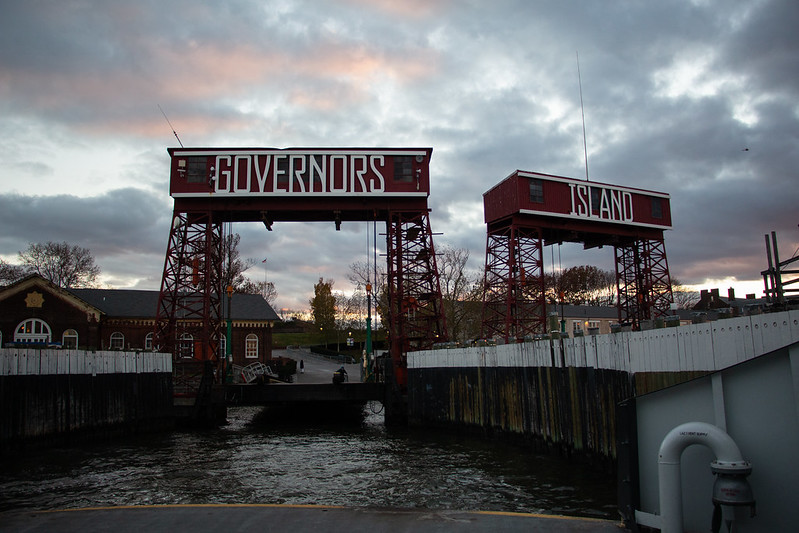Few New Yorkers know that half a mile from lower Manhattan, they can cross a short stretch of water and enter another world — one of abandoned buildings, open fields and a growing number of idiosyncratic art and sustainability projects. This peculiar place is Governors Island, a rare piece of undeveloped land in New York City that’s on the brink of change.
The island was originally a fishing camp for the Lenape people, then a landing for the Dutch West India Company, a retreat for the British governors of colonial New York, and a fort during multiple 18th and 19th century wars. Between 1966 and 1996, the island served as a Coast Guard base and home to approximately 3,000 people.
In 2003, Governors Island began welcoming the public, offering tours of the historic buildings and landscaping much of the island as park space. More people and amenities came each year, with about 1 million people visiting in 2019 before COVID-19 disrupted access. The island has since reopened, and is in fact open during the winter for the first time ever.
Not many visitors have chosen to brave the cold so far, but that may soon change. In May 2021, the City Council voted to rezone part of the island for commercial development — although there’s opposition from local activists. In September, Mayor de Blasio revealed plans for a climate change research center that could employ more than 7,000 people. And earlier this month, the city announced an ice skating rink and “winter village” will open on December 17.
The island is already home to several public art displays as well as organizations focused on environmental issues — including the Harbor School, a small public high school that trains students for careers on the water; the Billion Oyster Project, an effort to restore oysters to New York Harbor; and Earth Matter, a nonprofit and educational organization that composts the island’s food and landscaping waste.
With new academic institutions and businesses likely to join these existing tenants, Governors Island won’t be a quiet world unto itself for much longer.
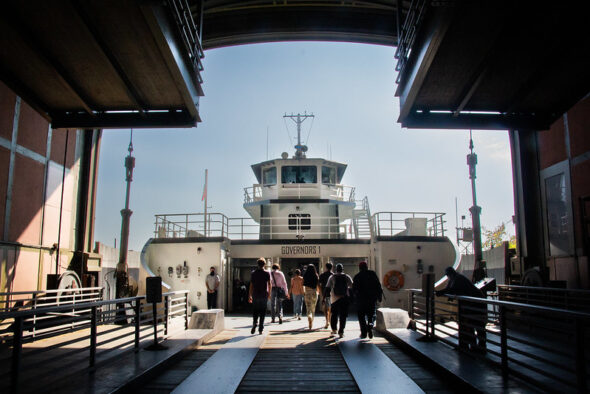
Passengers board the ferry to Governors Island from Manhattan. The trip takes barely 10 minutes. Oct. 15, 2021. Photo by Delger Erdenesanaa
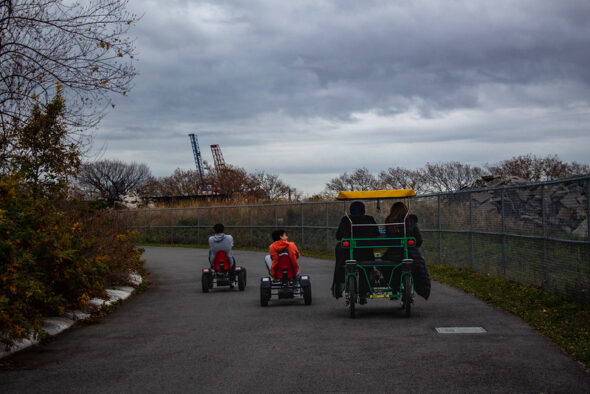
A family pedals rented carts by a construction site on Governors Island. New York City recently rezoned the island for new development, including a climate solutions center. Nov. 21, 2021. Photo by Delger Erdenesanaa
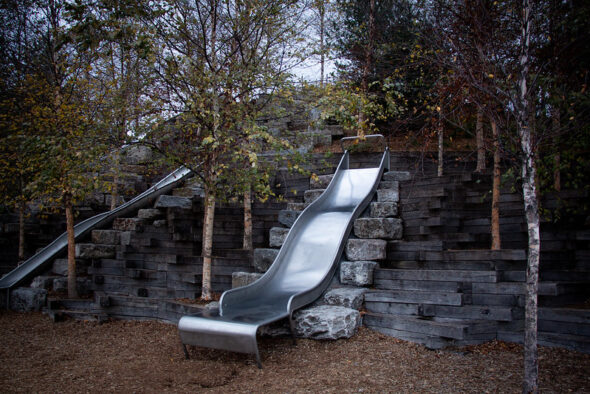
Slide Hill on Governors Island lies empty on a gloomy fall afternoon. During the summer, the area would be full of families out with their children. Nov. 21, 2021. Photo by Delger Erdenesanaa
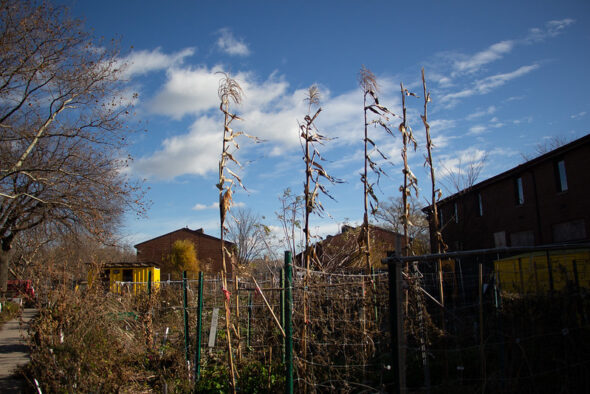
This educational garden on Governors Island grows crops from many of New York City’s different cultures and cuisines. The garden is run by Earth Matter, a nonprofit that composts the island’s food and landscaping waste. Dec. 3, 2021. Photo by Delger Erdenesanaa
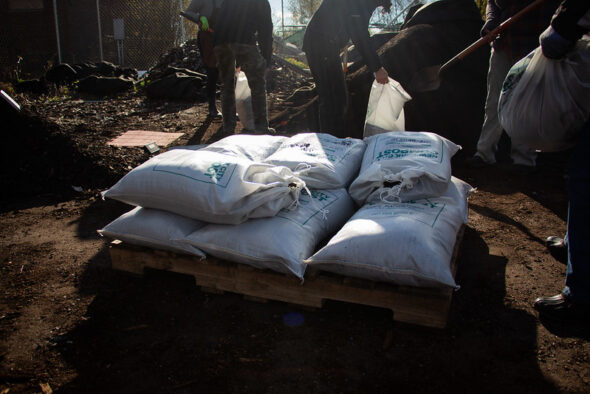
Volunteers and staff with Earth Matter on Governors Island shovel finished compost into bags that will be distributed to community gardens around New York City. Dec. 3, 2021. Photo by Delger Erdenesanaa
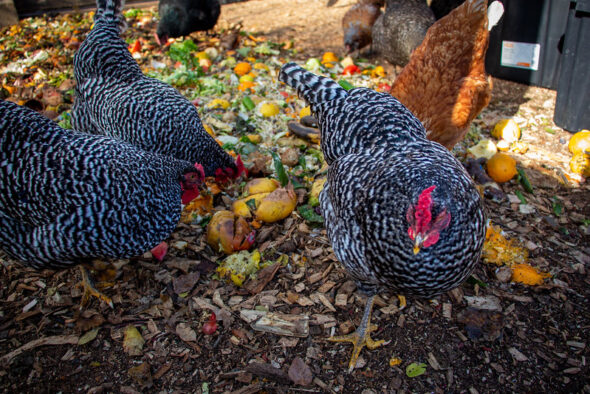
Laying hens who live in Earth Matter’s Compost Learning Center eat the food scraps produced by vendors, tenant organizations and visitors on Governors Island. Dec. 3, 2021. Photo by Delger Erdenesanaa
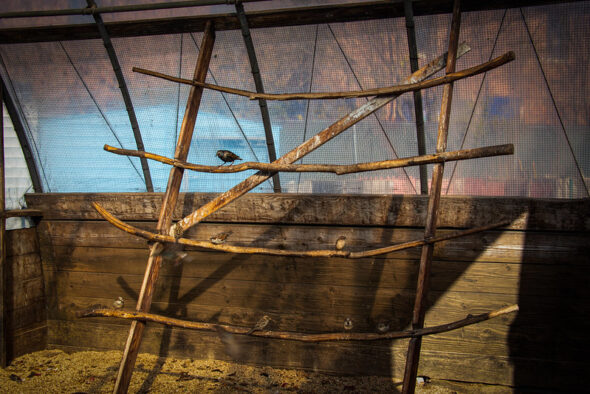
Starlings and sparrows take advantage of the chicken coop and food scraps at Earth Matter’s composting facility on Governors Island. Dec. 3, 2021. Photo by Delger Erdenesanaa
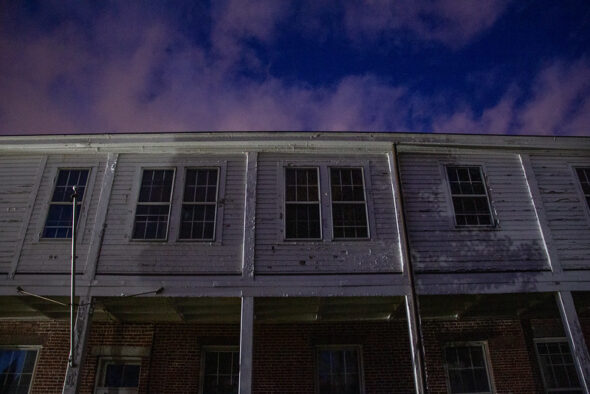
Visitors can only view this old residential building on Governors Island from the outside. From 1966 to 1996, about 3,000 people lived on the island during its days as a Coast Guard base. Nov. 29, 2021. Photo by Delger Erdenesanaa
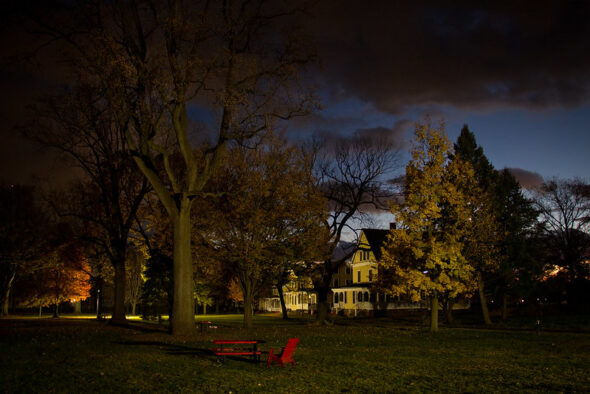
The former homes of Coast Guard families on Governors Island are now mostly uninhabitable, but a few New York City art, education and environmental organizations periodically rent these yellow houses. Nov. 29, 2021. Photo by Delger Erdenesanaa
